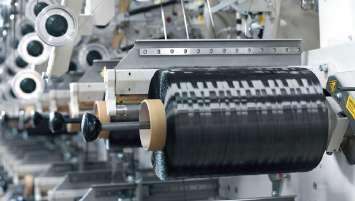28
INTERVIEW
SMEs: BACKBONE OF TEXTILE INDUSTRY INCOMLEND Mr. Morgan Terigi CEO and Co-founder, Incomlend
Incomlend founded in January 2016, is a global invoice financing marketplace giving SMEs access to tech-enabled working capital solutions supported by industry-leading institutional investors. Incomlend have financed more than USD500 million in trades in over 50 countries worldwide. The online platform helps investors build their portfolio to meet their investment parameters.
What are the key financial barriers confronting these SMEs?
Many SMEs in the textile industry are looking to bolster their financial health and agility to better weather the storm in the face of long-term economic uncertainty. However, many of them are often caught in a cycle where they cannot get the finance they require from larger, traditional banks. What are the challenges The main reason this happens Key Points that SMEs in the textile indusis that SMEs sometimes strugtry face in the current land- • Impact of COVID-19 on textile industry gle to prove creditworthiness. scape? As many SMEs have been • Pandemic affected on demand and supply chain placed in weakened financial The COVID-19 pandemic • SMEs suffering from long term implications situations due to the ongoing has impacted almost all ascrisis, they might get less suppects of the textile industry, • Significance disturbance in supply chain of the textile port from the banks and be left from demand to supply. Many industry unfinanced. small and medium enterprises • Cash flow restricted for many SMEs (SMEs) are suffering from the Traditionally, banks tend to exlong-term implications of the • Many SMEs end up self financing tend the on boarding process pandemic and the recurring • Alternative financing methods can assist SMEs in freeing for SMEs, which results in a government measures to curb up working capital and regaining fiscal viability slower turnaround time. Coninfections. Some of the most sequently, some SMEs wind up critical and immediate chal- • SMEs must discover alternative strategies to increase self-financing, which further lenges that we hear from our their financial robustness limits their ability to grow their customers include the sharp business. decline in sales and cancelled orders due to the widespread How can alternative funding solutions address these SMEs’ closure of physical stores. key challenges and position them for growth? Furthermore, as garments are not categorised as essential Today, we see more SMEs in the textile sector, such as Forgoods and services, manufacturers and sourcing companies tuneX, break down these financial barriers by accessing alface mandated closure in many markets. This has caused ternative funding solutions. By reducing their reliance on significant disruption in supply chains, leading to difficulty banks and diversifying their access to funding, SMEs are fuin procuring raw materials and halting manufacturing opture-proofing their business from any economic impact such erations. as the current pandemic. These factors are resulting in greater credit risk and restrictAs an SME, Incomlend understands the value of having aced cash flow for many SMEs in the sector. As their financial cess to cash flow in a quick turnaround time and not being health weakens, it is more challenging for SMEs to navigate hampered by the long-drawn credit checks imposed by tradithe volatility and ambiguity in supply-and-demand trends tional banks. Alternative financing solutions can help SMEs in the market and react to unforeseen situations, such as liberate their working capital and recover their financial late payments, cancelled orders, or even a sudden surge in health. These are the foundational elements for SMEs to dedemand for their products.
SEPTEMBER 2021





















